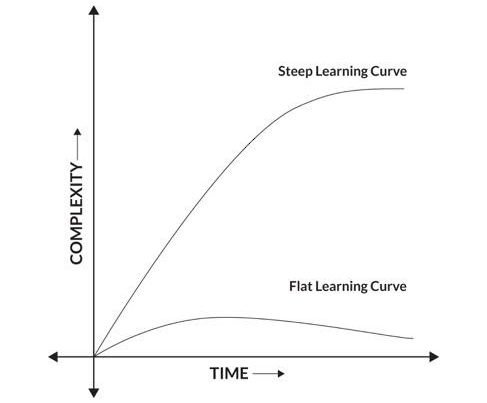Paper presented by Dr. Kaustubh Dhargalkar at Smart Cities Expo World Congress – Barcelona Nov ’15.

Introduction
The biggest challenge facing all of us today is CLIMATE CHANGE. Global warming is the natural consequence. Warming of the earth is not a new phenomenon. However, the rate at which it is happening today, to say the least, is alarming. Let us look at some facts:
The global Scenario:
In the last 5000 years, Earth’s temperature rose by 4 to 7 degrees celsius with little contribution from humankind.
However, in the coming 100 years, with human intervention (in the form of CO2 emissions), it will rise by 2 to 6 degrees celsius. Now, this is really dangerous, the consequences are bound to be disastrous. We need to change our lifestyles.
Green house gases emitted from the various fuels that we burn, are the culprit, CO2 being the main one.
As of today, 23% of all CO2 emissions in the world come from the transportation sector and will reach 32% by 2030, if we continue the way we consume energy.
The Indian scenario:
Of all the CO2 emissions from the transportation sector in India, 87% come from road transport alone. Hence, my focus here is going to be on reducing the carbon footprint of the automobile sector.
The electric vehicle (EV) paradox
Over the last few years, the emphasis has been on reducing tail pipe emissions and electric vehicles with zero tail pipe emissions seem to offer the greenest option. But, where do these EVs draw electricity from? For recharging, they access the usual distribution grid. However, 83% (global average) of the electricity generated comes from burning non-renewable sources such as coal and natural gas. So is the EV really a green option? At best, EVs create a cleaner city, whereas the countryside, where the thermal power plants are located, gets more polluted. Unless electricity drawn by an EV comes from renewable energy sources, the EV is NOT a green option.
For EVs to become a green and clean option, they must draw electricity from renewable sources such as biomass, solar, wind, hydel power, geo-thermal and tidal.
A look at the current business model of EVs
The current focus of EV manufacturers is on the following factors:
- Overcoming Range anxiety- Range anxiety is the anxiety a person experiences about being stranded in the middle of a journey if the battery gets discharged. So manufacturers of EVs are trying to create battery packs with higher capacities.
- Reducing recharging times- at present, a full charge from a home connection takes about 6 to 8 hours. Even TESLA’s Quick Recharge technology takes 20 to 30 minutes for a recharge good enough to run 270 odd kilometers, still not as quick as a stop at a gas station today.
- Providing better recharging infrastructure by increasing the number of recharging stations
- Lowering the price points of EVs.
The way forward
All these attempts are in the right direction, however, what about the carbon footprint of electricity generation? For this we need to create a different business model, wherein green energy generation becomes a part of the ecosystem of the electric vehicle manufacturer. An ecosystem integrating all the renewable sources needs to be created to ensure a reduced a carbon footprint and ensure higher popularity of the electric vehicle.
The proposed framework

The electric vehicle manufacturer should have a holding company that invests in various satellite companies that generate clean energy from various renewable sources. The energy thus generated should be uploaded on a SMART GRID and the holding company should be granted equivalent energy credits. The EV manufacturer could use these credits to recharge the batteries of EVS sold by them at authorized recharging stations. The excess credits left after recharging the EVs could be traded with other EV manufacturers or other carbon footprint-heavy industries. Thus, a thriving secondary market for “Green Energy Credits” could be created. Governments should offer tax benefits for income generated from trading of energy credits. This needs smart collaborations between various agencies and the government.
Sources of revenue for the EV manufacturer
- Fees from recharging the electric vehicles sold by them. This stream is going to be a recurrent one on subscription basis.
- Market price on sale of surplus energy generated.
- Trading of ‘Clean Energy Credits’
Mumbai- A Case Study
To understand the impact of this proposed model, I have taken the city of Mumbai in India as a case study and have explored two renewable energy sources, viz. biomass & solar
Let us look at biomass first. Mumbai has a population of approximately 21 million, each person generating on an average of 650 grams of solid waste every day. All of this adds upto a whopping 13,650 tons of solid waste per day. Assuming only 40% of this is collected and only 50% of it is converted into electricity, 448 GWhr of electricity can be generated per year. And this alone can recharge 67,327 EVs per year (assuming that an EV runs 20,000 kms per year). Actually 20,000 kms/year is a very high number for an Indian city dweller. So if that count is reduced we could have more EVs recharged through biomass alone. The calculation is based on one charge being good for 60 kms of running (based on the specifications of Mahindra’s E2O Reva)
Now, let us look at solar energy in Mumbai. Mumbai enjoys eight hours of bright sunshine a day for 300 days per year. I have considered five hours of effective sunlight (taking into account the most effective angle of incidence necessary for photovoltaic panels). Mumbai has around ninety gas stations with at least half an acre of land area. If these gas stations were covered with solar panels, the electricity generated would be enough to recharge 9630 EVs per year (the sets of assumptions remain the same as mentioned above for biomass energy).
In these calculations, only biomass and solar energy have been considered. Use of other renewable sources mentioned earlier could further enhance the number of EVs recharged per year.
The Operations
Electric vehicles are expensive because about 20 to 25% of its cost is that of the battery. If the vehicle is sold without the battery and the battery is provided as a subscription service, it will reduce the upfront cost of the electric vehicle and also create a recurring revenue stream for the electric vehicle manufacturer. At the recharging station, a consumer need not wait for long for recharging the battery. The discharged battery could be just swapped with a fully charged one in a matter of three to five minutes. This swappable battery technology was developed in 2007-08 by the company, ‘Better Place’ in Israel.
Advanced telematics could be used to predict the stocking pattern of batteries at various recharging stations. Each battery would have sensors that could sense the amount of charge left in the battery. GPS trackers embedded in each car could track its daily journey and the most likely recharging stations it would visit could be predicted. This would help tremendously in lean inventory management.
Benefits to the consumer
- Low upfront costs due to the battery being unbundled from the electric vehicle
- Smoother and seamless recharging due to the use of Swappable battery technology explained earlier.
Both these benefits would lead to higher consumer adoption.
Impact on the Ecosystem
- Decrease in the REAL carbon footprint, since an end-to-end renewable energy channel would be created.
- Energy costs would come down. By creating an energy credit market, there will be healthy competition between auto manufacturers to produce as much clean energy as possible thus driving down the cost of energy further
- Higher citizen engagement due to lower costs of electric vehicles. Higher demand would further drive down the cost of these vehicles.
- Most of the infrastructure being used to implement this model is existing one, hence the investments would not be very high.
Replicability in other ecosystems
I have put forth this business model for electric vehicles, however, in essence, it can be applied to any appliance that uses electricity, such as refrigerators, TVs, microwave ovens computers, mobile phones etc. in fact, everything around.
This needs strong collaborations between various agencies such as appliance manufacturers, power distribution grids, government agencies etc.
This would definitely lead to a greener and cleaner environment in the coming years.
Also Read:



